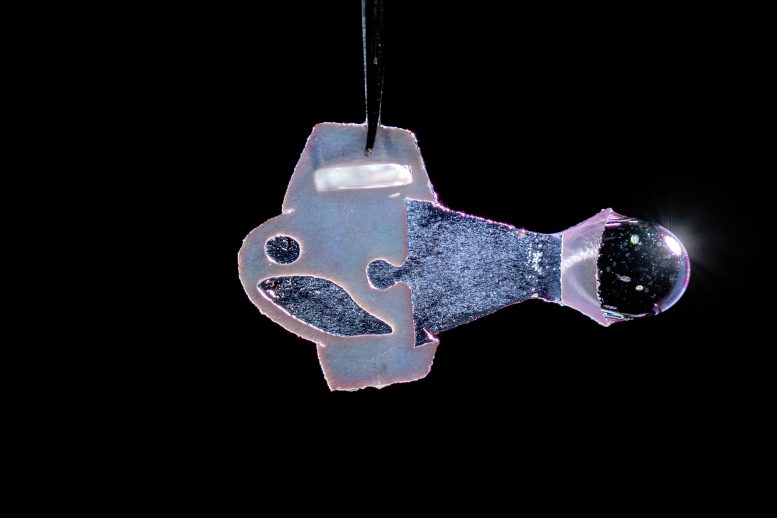
The first fully autonomous biohybrid fish from human stem-cell derived cardiac muscle cells. Credit: Michael Rosnach, Keel Yong Lee, Sung-Jin Park, Kevin Kit Parker
An autonomously swimming biohybrid fish, designed with a focus on two key regulatory features of the human heart, has revealed the importance of feedback mechanisms in muscular pumps (such as the heart). The findings could one day help inform the development of an artificial heart made from living muscle cells.
Biohybrid systems – devices containing both biological and artificial components – are an effective way to investigate the physiological control mechanisms in biological organisms and to discover bio-inspired robotic solutions to a host of pressing concerns, including those related to human health. When it comes to natural fluid transport pumps, like those that circulate blood, the performance of biohybrid systems has been lacking, however.
Here, researchers considered whether two functional regulatory features of the heart — mechanoelectrical signaling and automaticity — could be transferred to a synthetic analog of another fluid transport system: a swimming fish.
Lee et al. developed an autonomously swimming fish constructed from a bilayer of human cardiac cells; the muscular bilayer was integrated using tissue engineering techniques. Lee and team were able to control muscle contractions in the biohybrid fish using external optogenetic stimulation, allowing the fish analog to swim.
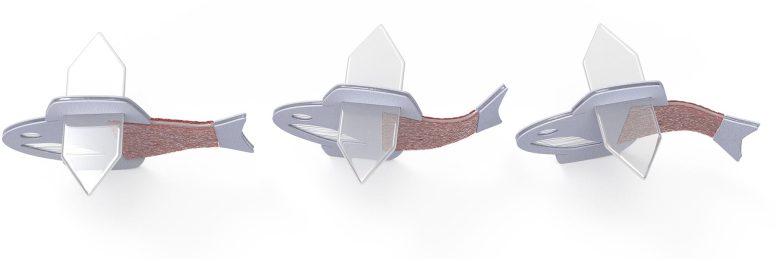
Schematics of autonomously swimming biohybrid fish. Credit: Michael Rosnach, Keel Yong Lee, Sung-Jin Park, Kevin Kit Parker
In tests, the biohybrid fish outperformed the locomotory speed of previous biohybrid muscular systems, the authors say. It maintained spontaneous activity for 108 days. By contrast, say the authors, biohybrid fish equipped with single-layered muscle showed deteriorating activity within the first month.
The data in this study demonstrate the potential of muscular bilayer systems and mechanoelectrical signaling as a means to promote maturation of in vitro muscle tissues, write Lee and colleagues.
“Taken together,” the authors conclude, “the technology described here may represent foundational work toward the goal of creating autonomous systems capable of homeostatic regulation and adaptive behavioral control.”
For more on this research, see Autonomous Biohybrid Fish – Made From Human Cardiac Cells – Swims Like the Heart Beats.
Reference: “An autonomously swimming biohybrid fish designed with human cardiac biophysics” by Keel Yong Lee, Sung-Jin Park, David G. Matthews, Sean L. Kim, Carlos Antonio Marquez, John F. Zimmerman, Herdeline Ann M. Ardoña, Andre G. Kleber, George V. Lauder and Kevin Kit Parker, 10 February 2022, Science.
DOI: 10.1126/science.abh0474

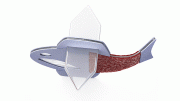
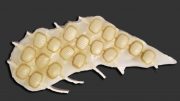

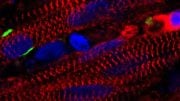
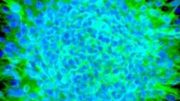
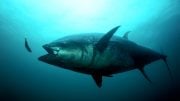


This reminds me of the famous wired electrified bullfrog exhibitions that inspired Mary Shelly to write the first science fiction novel.Sensationalist stuff.